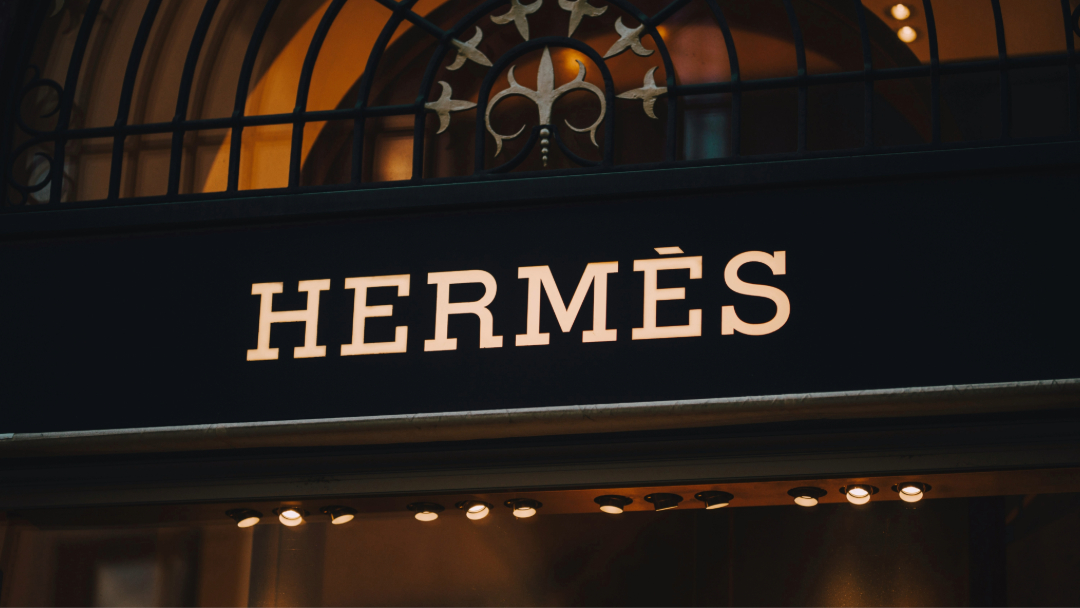What ensures success for brands in the luxury market today? Is it millions of dollars in marketing? Social media prowess? Superior design, distribution or pricing? Whatever the magic formula, as pressure continues to weigh down on the luxury industry, some brands will need to rethink their current strategies for the year ahead to keep pace with the changing tastes and preferences of today’s luxury consumers or risk losing them altogether.

The launch of Phoebe Philo’s debut collection was over in a flash. Selling out in just a matter of hours to the much-acclaimed designer’s loyal fanbase of Philo-philes, the lucky few who managed to get their hands on her new range of wide-legged trousers, asymmetrical tops, and chunky “Mum” necklaces demonstrated just how powerful a community of consumers can be towards brands today.
The following edit on November 28, of studded golden bikini bottoms, double-faced leather and shearling scarfs, and high-necked tops in stretch silk satin, received a similar reception. And the third drop from her label will be released at another undisclosed date. While such debuts in luxury fashion are rare (being one of the most revered and successful designers of her generation, thanks to her former roles as creative director of Céline and Chloé, plus the backing of luxury powerhouse LVMH as a minority shareholder, all contribute to her success), for the industry, it also signals that other pathways of how to succeed in luxury can clearly work.
And that perhaps, “a responsible balance between production and demand” is exactly how companies and their brands should be approaching their future collections. Because luxury appears to be in a somewhat transitional stage at this point.
Yes, the long-term fundamentals for growth appear to be robust. The latest findings from Bain & Company and Altagamma project that the global luxury market is projected to reach €1.5 trillion in 2023, an 8 to 10 percent rise compared to last year, setting yet another new record for the industry and demonstrating its unparalleled resilience, particularly as geopolitical and macroeconomic conditions heighten.
But as those headwinds persist in the fourth quarter, including fragile consumer confidence, macroeconomic tensions in China and sparse signs of recovery in the United States, 2024 looks set to see more of a softening towards personal luxury goods, achieving low to mid-single digital growth compared to 2023’s performance, based on current scenarios.
Nowhere is this more apparent than in the latest set of financial results reported from companies like LVMH, Hermès, Prada, Burberry and Kering. While LVMH, Hermès and Prada reported positive growth, although in some cases lower than the exceptional results seen in the same period last year, Kering and Burberry lagged behind their peers, demonstrating why brands will have to work much harder in the coming months to ensure they remain relevant and fresh to consumers who amidst all the noise are choosing to buy products that are “top of mind.”
“We are seeing luxury demand that is more in line with the long-term trends in the industry,” said Mario Ortelli, Managing Partner of Ortelli&Co, a strategy and M&A advisory company specialised in the luxury goods industry. “The luxury sector is always a bit volatile and remains very connected to the economic environment and geopolitical tension,” he added.
“Luxury is very scattered now and undergoing a lot of changes,” noted Marta Indeka, Senior Foresight Analyst at The Future Laboratory. “The more conventional luxury market still exists with historic clients and just operates how it’s operated for years. But at the same time, the face of the luxury consumer is completely changing.”
Indeed, by 2030, Gen Z is expected to account for 25 to 30 percent of luxury market purchases, while millennials will account for 50 to 55 percent, according to Bain & Co and Altagamma, meaning that brands will have to “navigate through rising multigenerational complexity,” and “playing ambidextrously to serve different needs across the consumer base,” said the report’s authors Claudia D’arpizio and Federica Levato.
“Last year, at least half of the growth in luxury was from millennials and Gen Z, and consumers as young as 15 are starting to buy luxury,” noted Indeka. “And these younger shoppers, they want stuff that’s completely different from the typical luxury offering some five years ago. That’s really pushing the sector forward.”
“I think that’s why we’re seeing such huge changes now,” she continued. “We are moving from brands doing the same thing for years because it’s working, to trying to test out new things to grab new audiences. So there is a bit of an identity crisis for some brands.”
Winners and Losers
It’s important to note that there are always cycles, notes Robert Burke, CEO and Chairman of Robert Burke Associates, which specialises in retail, fashion and hospitality. “There are different moments when big brands dominate and different moments when smaller brands are cooler and more prevalent.”
“But the one thing we can guarantee is that people get tired, the consumer gets fatigued and tired of the same thing,” he added. “And they do like to break out and show their own personalities and their differences.”
In this ever-evolving landscape, it can be hard to know what luxury brands need to do to succeed. Especially when what appeared to be working a few years ago, such as the countless cross-collaborations seen between different fashion houses and logomania, and even more recently this summer’s Barbie-core trend, have seemingly faded into oblivion, replaced by more understated designs from every luxury house that blend into one another, no doubt part of brands’ efforts to tap into the tail-end of the “quiet luxury” trend.

Credit: Courtesy.
Yet, there are those who are clearly leading, like Prada, Louis Vuitton and Loewe, whose aura as some of the “hottest” brands are detailed in Lyst’s quarterly index, which takes into its shoppers’ behaviour, including searches on and off platform, product views and sales as well as social media mentions, activity and engagement statistics globally. In the third quarter, Miu Miu (Prada’s little sister brand), Loewe and Prada held the top three spots.
And while there are outliers, like Jacquemus and Phoebe Philo, whose points of view really resonate with their consumers and audiences, the gap between the winners and losers in luxury is even more pronounced than ever, demonstrating that it takes a lot more for brands to succeed than just slapping a logo on their products and expecting consumers to just buy it. But the answer isn’t simple. What works for one small niche brand isn’t the same as the juggernauts that dominate the industry.
Ultimately, is being bigger in luxury, the only pathway to long-term success?
“I believe it is harder today more than ever, for a young designer or an emerging designer, or a mid-tier luxury designer, to become very big on their own,” said Burke. “It’s a difficult time even for somewhat established designers to grow into the next Michael Kors, Ralph Lauren, Armani or Valentino. And we just might not see that.”
“For bigger brands, it can be easier to get recognition. And it’s easier to build a fandom and a community within younger audiences that are super savvy and super knowledgeable about the product, about the design, and about the history of the brand,” said Indeka. “But building a business model that can be sustainable long term with real growth – that is another challenge, for newer brands it is tough to make their business models viable.”
Top of Mind
“Let’s put it this way, you must be top of mind for the consumer,” said Ortelli. “If you’re top of mind, for the consumer, it’s better to be big because you make more money. Why is Louis Vuitton a 20 billion euro brand? Because it is able to micro-segment its customer base and come out with overarching values that appeal to both the younger teenagers, millennials and boomers gen through its storytelling and communications.”
“You should be like a superhero,” said Ortelli. “You should be excellent in all dimensions and use your unique powers to enchant and engage your customers. When you are a big brand, you should have lots of different superpowers that enable you to be relevant for different customers today.”
What that means for smaller brands is basically having to think in more creative ways.
“It’s a really interesting time because many brands are being bold about their strategies and experimenting with new concepts,” said Indeka. “A lot of sleeping beauties in luxury are rebounding. And if you want to do more fun stuff and introduce big change, it’s a great time to do so.”

Credit: Courtesy.
Swimming Against The Current
It’s important to note that brands like Phoebe Philo and Jacquemus aren’t the rule. “These are exceptions. Phoebe Philo being given the opportunity to create a collection on her own terms, but with the LVMH powerhouse backing her, it’s not a chance that would be given to a random – or even an established – fashion designer, and that really needs to be acknowledged.”
“On the other side, the expectations of her line were so great, that some fans actually ended up a little bit disappointed,” Indeka added. “Some have thought the collection was new enough, or that there weren’t enough pieces and it sold out too quickly.”
Clearly, even the best of debuts can have their critics.
For Burke, it’s about having a specific point of view that resonates with your audiences and understanding that less can actually be more. “Brands do need to curate themselves,” he noted. “People are looking at luxury in a different way, and they still want it and desire it but they’re also becoming more sensitive to how a head-to-toe designer look is now perceived as not being cool.”
“In the world of fashion, a little bit can go a long way with some of these major brands,” he added. “Being open to having your products curated and mixed with other labels, and I think we’ll start to see that more, where maybe two, three, or four years ago, it was more acceptable to wear head-to-toe.”
Clearly what will define the winners and losers in the year ahead will be the point of view that brands, big or small, put across to their audiences and how that resonates with consumers in a meaningful way.
“Niche is the golden standard for generation Z,” Indeka said. “They are attracted to countercultures and they want to swim against the current. But while mainstream culture isn’t appealing to Gen Z, there can be a dissonance because they still covet mega brands and at the same time try to find that small designer that no one’s heard of, or want to buy that limited edition product that no one can copy.”










